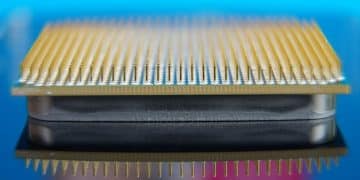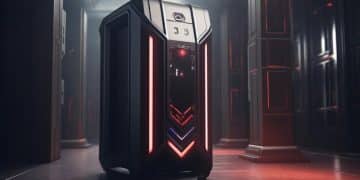Mastering Gaming: A Deep Dive into PC Performance Optimization
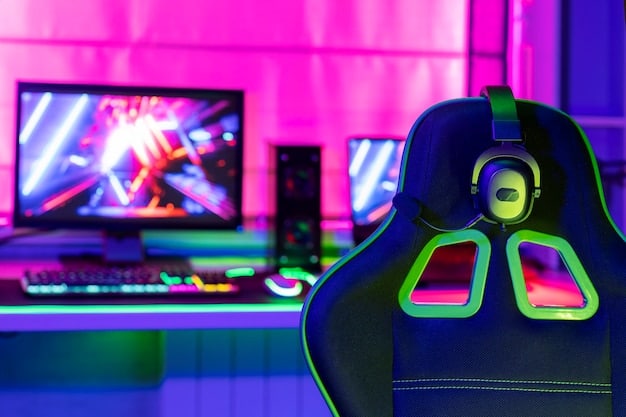
Achieving optimal gaming performance on PC involves a multi-faceted approach, balancing hardware capabilities, software configurations, internet connectivity, and user habits to ensure a smooth, immersive, and responsive gameplay experience.
In the realm of PC gaming, the pursuit of superior performance is an endless quest. This isn’t just about raw power; it’s about meticulously synchronizing every component to deliver an unparalleled gaming experience. Mastering gaming performance optimization ensures your rig runs games at their peak, minimizing lag, maximizing frame rates, and immersing you fully in virtual worlds.
Understanding the Core Pillars of Gaming Performance
At its heart, maximizing gaming performance hinges on a clear understanding of its foundational elements. These aren’t isolated concepts but rather interconnected systems that, when harmonized, unlock your PC’s full potential. Dismissing any one pillar can lead to bottlenecks and suboptimal experiences, undermining even the most powerful hardware.
Hardware Prowess: The Engine Room
Your PC’s components are the bedrock of its gaming capabilities. The CPU, GPU, RAM, and storage all play pivotal roles. A powerful graphics card handles the rendering of complex visual scenes, while a robust processor manages game logic and background tasks. Sufficient RAM ensures smooth multitasking, and fast storage, particularly NVMe SSDs, drastically reduces loading times and minimizes in-game stutter.
- Graphics Card (GPU): The single most critical component for gaming. Its power dictates resolution, frame rates, and graphical settings.
- Processor (CPU): Crucial for game logic, AI, physics, and managing other system processes. A strong CPU prevents bottlenecks even with a high-end GPU.
- Random Access Memory (RAM): Aim for at least 16GB for modern gaming, operating at higher speeds to facilitate faster data access.
- Storage (SSD/NVMe): Essential for quick loading screens and reducing in-game texture pop-in. NVMe drives offer superior performance over traditional SATA SSDs.
Balancing these components is key. An ultra-powerful GPU paired with an outdated CPU will lead to bottlenecks, where the CPU cannot feed data to the GPU fast enough. Conversely, a strong CPU with a weak GPU will result in low frame rates and graphical limitations. Each component must be considered in relation to the others for a truly balanced and efficient gaming machine, ensuring that every dollar spent contributes effectively to overall performance.
Software Optimization: The Silent Architect of Speed
While hardware provides the raw power, software optimization acts as the subtle architect, refining and directing that power efficiently. Overlooking software tweaks is akin to having a high-performance engine without a finely tuned transmission: you have the potential, but it’s not being fully utilized. This section delves into the critical software aspects that significantly impact your gaming experience.
Operating System and Driver Management
Keeping your operating system up-to-date is fundamental. Windows updates often include performance enhancements and bug fixes. More importantly, GPU drivers are arguably the most crucial software component for gaming. NVIDIA, AMD, and Intel frequently release new drivers that provide significant performance gains, stability improvements, and optimizations for new game titles. Ignoring these updates can leave substantial performance on the table, leading to missed frames and potential crashes.
Regularly check for and install the latest drivers directly from the manufacturer’s website. Avoid relying solely on Windows Update for GPU drivers, as these are often not the most current versions. Ensuring other critical drivers, like chipset drivers and audio drivers, are also updated can prevent system conflicts and improve overall stability, contributing to a smoother gaming environment.
Beyond drivers, manage your background processes diligently. Unnecessary applications running in the background consume CPU, RAM, and disk I/O, diverting resources away from your game. Use Task Manager to identify and close resource-intensive apps before launching a game. Consider setting games to ‘High Performance’ mode in Windows graphics settings, allowing the system to prioritize game processes.
In-Game Settings and Their Impact
Adjusting in-game settings is where many players make or break their performance. Understanding the impact of each graphical option is vital. Settings like texture quality, shadow quality, anti-aliasing, and ambient occlusion significantly affect GPU load. While higher settings provide better visual fidelity, they directly translate to lower frame rates if your hardware isn’t powerful enough.
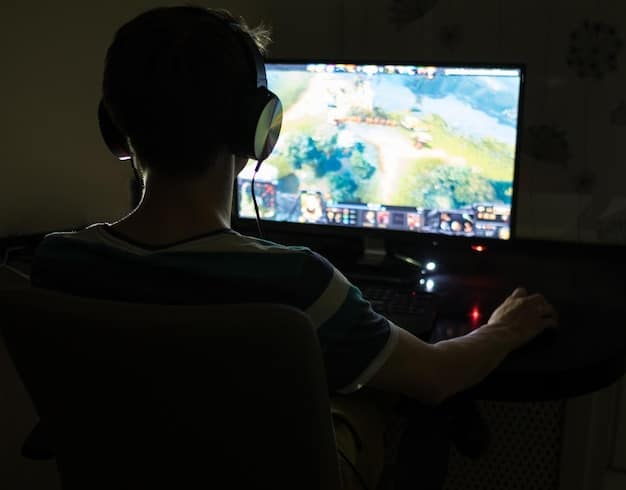
Experiment with settings. Start with recommended presets, then incrementally adjust individual options. For competitive gaming, prioritize frame rate and responsiveness over visual bells and whistles. Disabling computationally expensive features like ray tracing on mid-range hardware might be necessary to maintain playable frame rates. The goal is to find the optimal balance between visual quality and smooth performance for your specific setup.
- Resolution: The most significant performance factor. Lowering resolution provides a substantial frame rate boost.
- Texture Quality: Impacts VRAM usage. If textures are slow to load, lower this setting.
- Shadow Quality: Shadows are notoriously performance-intensive. Reducing this can yield significant gains.
- Anti-Aliasing: Smooths jagged edges but can be very demanding. Consider less intensive methods like FXAA or TAA.
- Post-Processing Effects: Effects like motion blur, depth of field, and screen space reflections can add immersion but also add to GPU load.
Regularly review new game patches and updates, as these often include performance improvements or new graphical features that might require re-evaluation of your settings. A well-optimized game within well-managed software forms the cornerstone for an exceptional gaming experience.
Network Latency and Stability: The Invisible Thread
In an increasingly connected gaming world, network performance is as crucial as hardware horsepower, especially for multiplayer titles. Latency, often referred to as “ping,” and network stability are the invisible threads that determine the responsiveness and fairness of your online matches. Ignoring these aspects can lead to frustrating delays, disconnections, and a fundamentally compromised gaming experience, regardless of your hardware.
Understanding Latency and Packet Loss
Latency measures the time it takes for data to travel from your PC to the game server and back. Lower latency (lower ping) means faster communication, resulting in more responsive gameplay where your actions register almost instantly. High latency, on the other hand, causes noticeable delays, often manifesting as “lag” or perceived teleportation by other players. Packet loss occurs when data packets fail to reach their destination. This leads to missing information, causing stuttering, hit registration issues, and disconnections, making the game unplayable.
Several factors contribute to latency and packet loss. Your internet service provider (ISP), the quality of your home network equipment (router, cables), the distance to the game server, and network congestion all play a role. Even background applications consuming bandwidth can negatively impact your online gaming experience without you realizing it. Identifying and mitigating these factors is crucial for competitive and fluid online play.
Optimizing Your Home Network for Gaming
Improving your home network for gaming involves several practical steps. First and foremost, use a wired Ethernet connection instead of Wi-Fi whenever possible. Ethernet provides a more stable, faster, and lower-latency connection than wireless. If Wi-Fi is unavoidable, ensure your router supports modern standards like Wi-Fi 5 (802.11ac) or Wi-Fi 6 (802.11ax) and that your PC’s wireless adapter is compatible.
- Wired Connection: Always prefer Ethernet over Wi-Fi for superior stability and lower latency.
- Router QoS: Configure Quality of Service (QoS) settings on your router to prioritize gaming traffic over other network activities.
- Close Background Apps: Stop torrents, streaming services, and large downloads on your network while gaming.
- Update Firmware: Keep your router’s firmware updated for performance improvements and security patches.
- Server Region Selection: Choose game servers geographically closer to you to minimize latency.
Consider upgrading older network hardware. An outdated router can be a major bottleneck, even with a high-speed internet plan. Placing your router optimally to minimize signal interference and checking for Wi-Fi channel congestion can also yield improvements. These seemingly small adjustments to your network configuration can significantly reduce lag and provide a far more enjoyable and competitive online gaming experience.
System Maintenance: Sustaining Peak Performance
Just like any high-performance machine, a gaming PC requires regular maintenance to sustain its peak capabilities. Neglecting routine upkeep can lead to performance degradation, instability, and even premature hardware failure. This isn’t about complex procedures but consistent, straightforward practices that ensure your system remains clean, efficient, and ready for action.
Keeping Your PC Clean: Inside and Out
Physical cleanliness is paramount. Dust accumulation inside your PC components, particularly on heatsinks and fans, acts as an insulator, trapping heat and reducing cooling efficiency. This leads to higher operating temperatures, which can cause thermal throttling (reduced performance to prevent overheating) or even permanent damage to components. Regularly clean out dust using compressed air, focusing on the CPU cooler, GPU heatsink, and case fans. Ensure good airflow inside your case by managing cables and strategically placing fans.
Beyond physical dust, digital clutter also impacts performance. Regularly uninstall programs you no longer use. These can consume disk space, create unnecessary background processes, and even leave behind residual files that clutter your system’s registry. Use Windows’ built-in “Add or Remove Programs” feature, or consider third-party uninstaller tools that perform a more thorough cleanup. A clean digital environment contributes to faster boot times, quicker application launches, and overall system responsiveness.
Disk Defragmentation and System Files
For traditional Hard Disk Drives (HDDs), regular defragmentation is important. Files on HDDs can become fragmented over time, meaning parts of a single file are scattered across different parts of the disk. This increases access time, slowing down game loading and overall system responsiveness. Windows has a built-in Disk Defragmenter tool. However, for Solid State Drives (SSDs) and NVMe drives, defragmentation is unnecessary and can actually shorten their lifespan; these drives manage data differently.
Keeping your system files healthy is also critical. Run Windows’ System File Checker (SFC) periodically to scan for and repair corrupted system files. Use Disk Cleanup to remove temporary files, browser caches, and other junk that accumulates over time, freeing up valuable disk space. These routine maintenance tasks, though seemingly minor, contribute significantly to maintaining optimal gaming performance and extending the lifespan of your hardware. A well-maintained system simply runs better, allowing you to focus on the game rather than troubleshooting.
Advanced Tweaks and Overclocking: Pushing the Limits
For enthusiasts aiming to squeeze every last frame out of their hardware, advanced tweaks and overclocking present avenues for significant performance gains. However, these methods come with inherent risks and require a deeper understanding of PC components. They are generally recommended for experienced users who are comfortable with potential instability and have conducted thorough research.
Overclocking CPU and GPU
Overclocking involves increasing the clock speed of your CPU or GPU beyond their factory default settings. This directly translates to more processing cycles per second, leading to higher frame rates and improved overall performance in games. GPU overclocking is often the more straightforward and impactful method for gaming, yielding noticeable gains. Tools like MSI Afterburner or ASUS GPU Tweak II allow for easy adjustment of core clock, memory clock, and voltage.
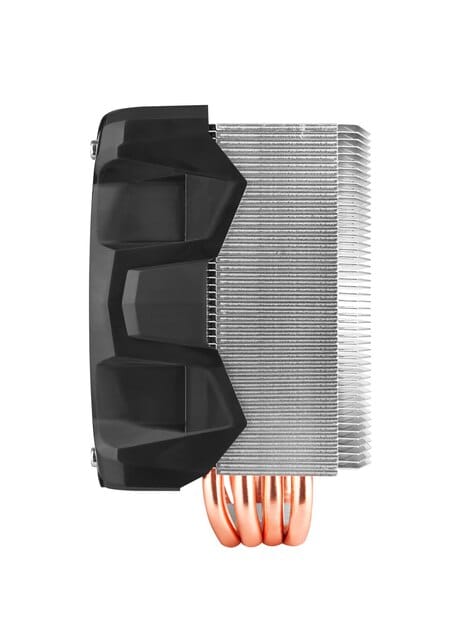
CPU overclocking typically requires a “K” or “X” series Intel CPU or an AMD Ryzen CPU with an unlocked multiplier, paired with a compatible motherboard. This offers system-wide performance boosts but can be more complex and require careful voltage adjustments and robust cooling. Both CPU and GPU overclocking demand excellent cooling solutions, as increased clock speeds generate more heat. Monitoring temperatures diligently is crucial to prevent overheating and instability.
BIOS/UEFI Settings and Power Plans
Delving into your motherboard’s BIOS/UEFI settings can unlock further performance optimizations. Enabling features like XMP (Extreme Memory Profile) ensures your RAM runs at its advertised speeds, which can significantly impact gameplay, especially for Ryzen CPUs. Disabling unnecessary onboard peripherals can free up resources. Adjusting fan curves to be more aggressive can improve cooling, though at the expense of noise.
In Windows, ensure your power plan is set to “High Performance” or “Ultimate Performance.” These plans prevent your CPU from downclocking to save power, ensuring it always runs at its maximum potential during gaming. While this consumes more energy, it eliminates potential performance dips caused by power management features. These advanced tweaks, when implemented correctly and with caution, can provide a noticeable edge in terms of raw frame rates and overall system responsiveness, truly pushing your PC to its limits.
Future-Proofing Your Gaming PC: Investing Wisely
The pace of technological advancement in PC gaming is relentless. What’s bleeding-edge today can feel obsolete in just a few years. Future-proofing isn’t about building a PC that will never need upgrades, but rather about making strategic investments that extend its competitive lifespan and ease future upgrades. This proactive approach saves money and hassle in the long run, ensuring you remain at the forefront of gaming innovation.
Strategic Component Selection
When building or upgrading, opt for components with a clear upgrade path. For CPUs, this means choosing a motherboard platform that supports future generations of processors. For example, selecting an AMD AM5 motherboard or a recent Intel LGA1700 motherboard allows for CPU upgrades within the same socket, avoiding a complete platform overhaul. Similarly, investing in a high-quality Power Supply Unit (PSU) with ample wattage (850W or more for high-end systems) ensures it can handle more powerful GPUs and CPUs down the line, without needing replacement during an upgrade cycle.
Memory and storage are also key. Starting with 16GB of fast RAM (DDR4-3200 or DDR5-6000+) leaves room for expansion to 32GB if needed. Acquiring a larger NVMe SSD (1TB or 2TB) from the outset reduces the immediate need for additional storage, and having multiple M.2 slots on your motherboard provides flexibility for future additions. These components are relatively easy to swap out and their longevity justifies a slightly higher initial investment, proving beneficial as games demand more resources.
- Motherboard: Choose one with a recent chipset and socket for potential future CPU upgrades.
- Power Supply Unit (PSU): Invest in a reliable PSU with overhead wattage for future, more power-hungry components.
- RAM: Start with at least 16GB of fast RAM, ensuring your motherboard has free slots for future expansion.
- Storage: Prioritize large NVMe SSDs for primary game installations, leaving space for new titles.
- Case: Select a case with good airflow and ample space for larger components and liquid cooling if desired.
Embracing New Technologies
While cutting-edge technology adds to the cost, some advancements offer significant long-term benefits. Ray tracing and DLSS/FSR are prime examples. While early adoption of ray tracing was performance-heavy, newer GPUs handle it with increasing efficiency, and technologies like DLSS (NVIDIA) and FSR (AMD) use AI-powered upscaling to boost frame rates with minimal visual loss, effectively “future-proofing” your ability to run graphically demanding titles. Investing in a display with a high refresh rate (144Hz+) and adaptive sync (G-Sync or FreeSync) technology also enhances the gaming experience, ensuring smooth visuals even with fluctuating frame rates.
Considering your monitor’s resolution also factors into future-proofing. While 1080p is still popular, 1440p is becoming the sweet spot, and 4K is gaining traction. Building a PC capable of handling 1440p gaming ensures versatility for years to come. By making informed choices about key components and embracing emerging technologies, you can build a gaming PC that not only performs exceptionally today but also serves as a robust platform for the demanding titles of tomorrow, minimizing the frequency and cost of major overhauls.
Troubleshooting Common Gaming Performance Issues
Even with optimal hardware and software configurations, occasional performance hiccups are inevitable. Knowing how to diagnose and resolve common gaming performance issues is a valuable skill that can quickly get you back into the game, avoiding frustration and potentially costly professional assistance. This section outlines typical problems and practical steps to tackle them.
Diagnosing Frame Rate Drops and Stuttering
Sudden frame rate drops or persistent stuttering are among the most frustrating issues for gamers. The first step is to use in-game overlays (like NVIDIA’s GeForce Experience, AMD’s Radeon Software, or MSI Afterburner’s Rivatuner Statistics Server) to monitor your CPU and GPU usage, temperatures, and frame rates in real-time. This data can pinpoint the bottleneck. If your GPU usage is consistently at 99-100% and frame rates are low, your GPU is likely the limiting factor, and you might need to lower graphical settings. If CPU usage is high and GPU usage is low, you have a CPU bottleneck.
High temperatures are another common culprit. If your GPU or CPU temperatures exceed safe thresholds (typically above 85-90°C), components will “throttle” their performance to prevent damage, causing frame rate drops. Ensure adequate cooling, clean out dust, and check if your thermal paste needs reapplying. Background applications, even seemingly innocent ones, can also steal resources. Check Task Manager for rogue processes consuming CPU or RAM.
Resolving Game Crashes and Freezes
Game crashes or freezes are often indicative of stability issues. Outdated or corrupted GPU drivers are a primary suspect. Perform a clean installation of the latest drivers, using a tool like Display Driver Uninstaller (DDU) to remove all traces of previous drivers first. Overclocking, if applied, can also lead to instability. If you’ve overclocked your CPU or GPU, try reverting to stock speeds to see if the crashes cease. If they do, your overclock might be unstable and needs fine-tuning.
Corrupted game files can also cause crashes. Verify the integrity of game files through your game launcher (Steam, Epic Games, etc.). This process checks for missing or damaged files and redownloads them. System RAM issues can also lead to crashes. Run a memory diagnostic tool (like Windows Memory Diagnostic or MemTest86) to check for faulty RAM sticks. Lastly, software conflicts from an antivirus, firewall, or other overlays can interfere with games. Temporarily disable these to see if the issue resolves. Systematic troubleshooting, starting with the most common causes, is the most effective approach to resolving performance issues.
| Key Point | Brief Description |
|---|---|
| 🚀 Hardware Balance | Ensure CPU, GPU, RAM, and Storage are well-matched to avoid bottlenecks. |
| ⚙️ Software Tuning | Keep drivers updated, manage in-game settings, and close background apps. |
| 🌐 Network Harmony | Prioritize wired connections, optimize router QoS for stable online play. |
| 🧹 System Upkeep | Regularly clean dust, uninstall unused programs, and defrag HDDs (not SSDs). |
Frequently Asked Questions About PC Gaming Performance
▼
While all components play a role, the Graphics Processing Unit (GPU) is generally the most critical for gaming performance. It’s responsible for rendering visuals, and a powerful GPU directly impacts frame rates, resolution capabilities, and the fidelity of in-game graphics settings. A high-end GPU can elevate your gaming experience significantly.
▼
It’s advisable to update your GPU drivers whenever new releases drop, especially before playing a new AAA game title. Graphics card manufacturers frequently release “Game Ready” drivers that optimize performance for recent releases and include bug fixes. Checking for updates monthly or bi-monthly is a good practice to ensure optimal performance and stability.
▼
For most modern games, 16GB of RAM is still considered the sweet spot and sufficient for a smooth gaming experience. However, some very demanding titles or multitasking while gaming might benefit from 32GB. For future-proofing, 32GB is becoming increasingly relevant, but 16GB remains perfectly adequate for current needs.
▼
Always prioritize an Ethernet (wired) connection for online gaming. Ethernet offers significantly lower latency, greater stability, and higher bandwidth compared to Wi-Fi. This translates to a more responsive and reliable online gaming experience, reducing frustrating lag spikes and disconnections, crucial for competitive play.
▼
Overclocking can be safe if done cautiously and correctly, with proper voltage adjustments and adequate cooling. However, it does carry risks, including potential instability, reduced component lifespan, and voiding warranties if not managed properly. It’s recommended for experienced users who understand the process and can monitor temperatures diligently.
Conclusion
Optimizing PC gaming performance is not a one-time task but an ongoing process, a continuous refinement of hardware, software, and network elements. By deeply understanding how each component contributes to the overall experience and consistently applying best practices in maintenance and configuration, gamers can unlock their PC’s true potential. The pursuit of optimal performance isn’t just about higher frame rates; it’s about crafting an immersive, responsive, and ultimately more enjoyable gaming journey that keeps you ahead of the curve and fully immersed in your virtual worlds.




